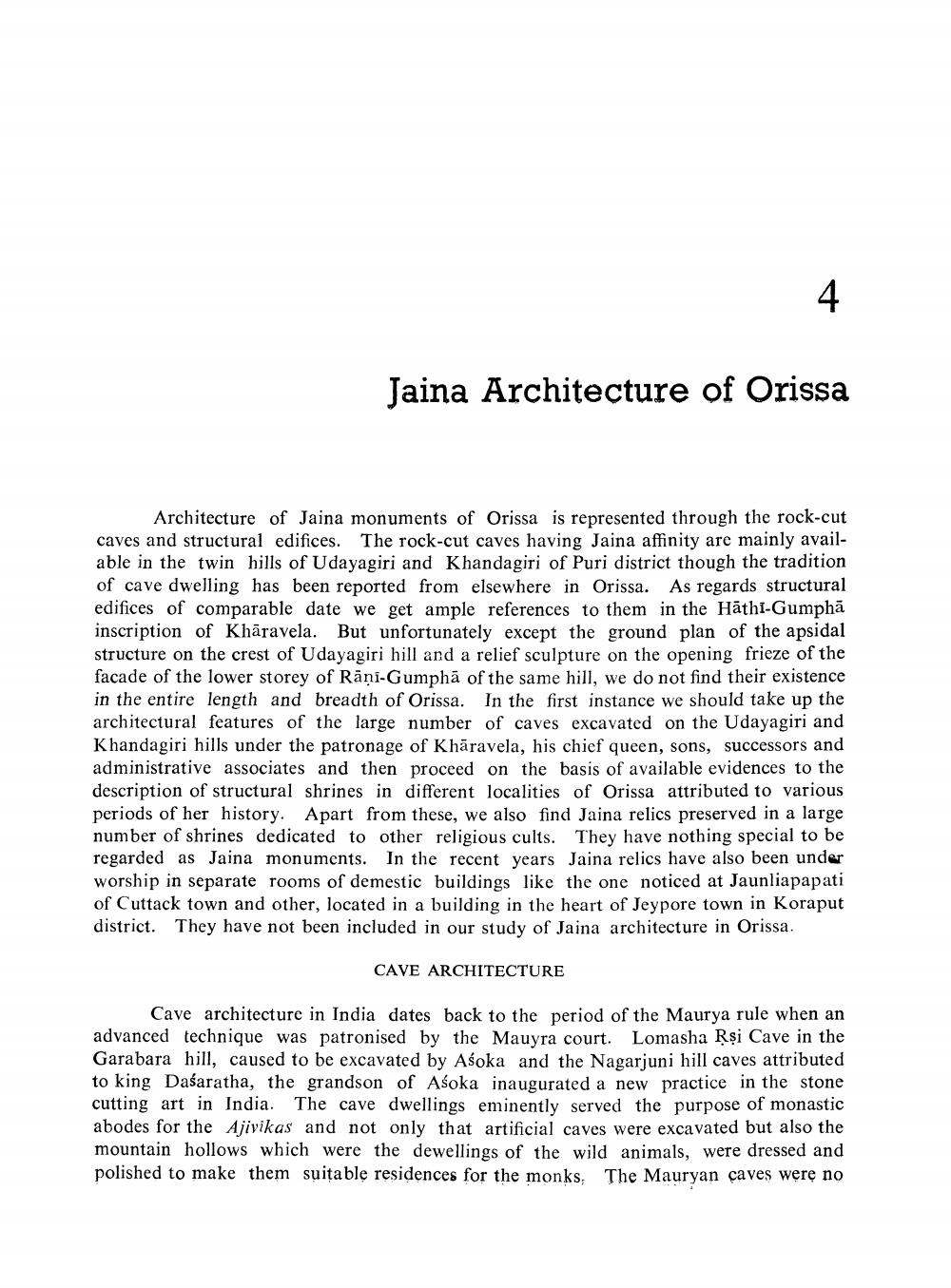________________
Jaina Architecture of Orissa
Architecture of Jaina monuments of Orissa is represented through the rock-cut caves and structural edifices. The rock-cut caves having Jaina affinity are mainly available in the twin hills of Udayagiri and Khandagiri of Puri district though the tradition of cave dwelling has been reported from elsewhere in Orissa. As regards structural edifices of comparable date we get ample references to them in the Hathi-Gumphā inscription of Khāravela. But unfortunately except the ground plan of the apsidal structure on the crest of Udayagiri hill and a relief sculpture on the opening frieze of the facade of the lower storey of Rāņi-Gumphā of the same hill, we do not find their existence in the entire length and breadth of Orissa. In the first instance we should take up the architectural features of the large number of caves excavated on the Udayagiri and Khandagiri hills under the patronage of Khāravela, his chief queen, sons, successors and administrative associates and then proceed on the basis of available evidences to the description of structural shrines in different localities of Orissa attributed to various periods of her history. Apart from these, we also find Jaina relics preserved in a large number of shrines dedicated to other religious cults. They have nothing special to be regarded as Jaina monuments. In the recent years Jaina relics have also been under worship in separate rooms of demestic buildings like the one noticed at Jaunliapapati of Cuttack town and other, located in a building in the heart of Jeypore town in Koraput district. They have not been included in our study of Jaina architecture in Orissa.
CAVE ARCHITECTURE
Cave architecture in India dates back to the period of the Maurya rule when an advanced technique was patronised by the Mauyra court. Lomasha Rși Cave in the Garabara hill, caused to be excavated by Aśoka and the Nagarjuni hill caves attributed to king Dasaratha, the grandson of Asoka inaugurated a new practice in the stone cutting art in India. The cave dwellings eminently served the purpose of monastic abodes for the Ajivikas and not only that artificial caves were excavated but also the mountain hollows which were the dewellings of the wild animals, were dressed and polished to make them suitable residences for the monks, The Mauryan caves were no
abodes fort in India. he grandscavated by




